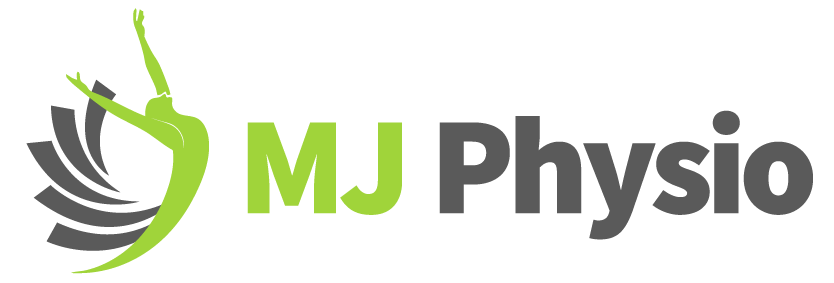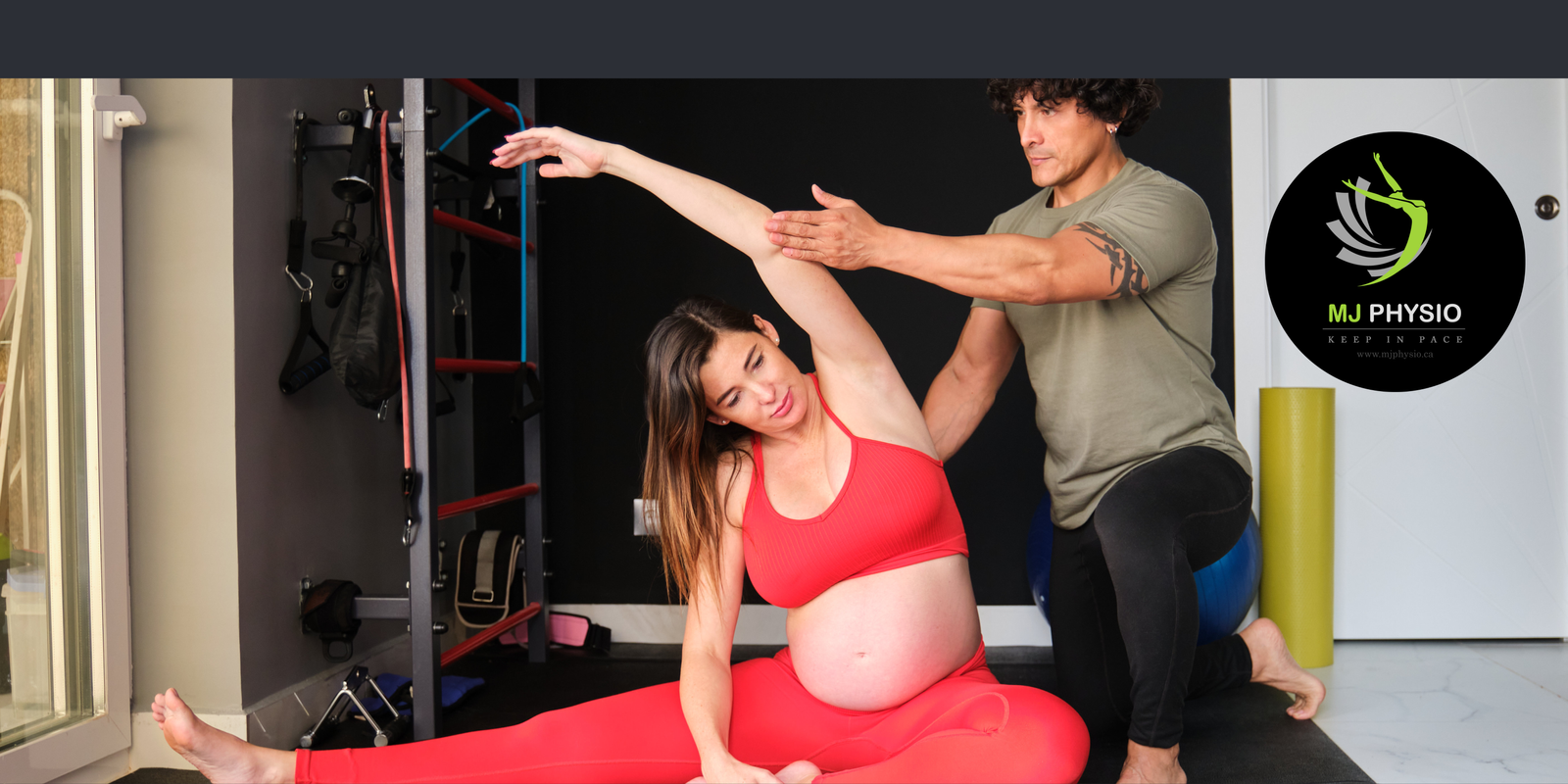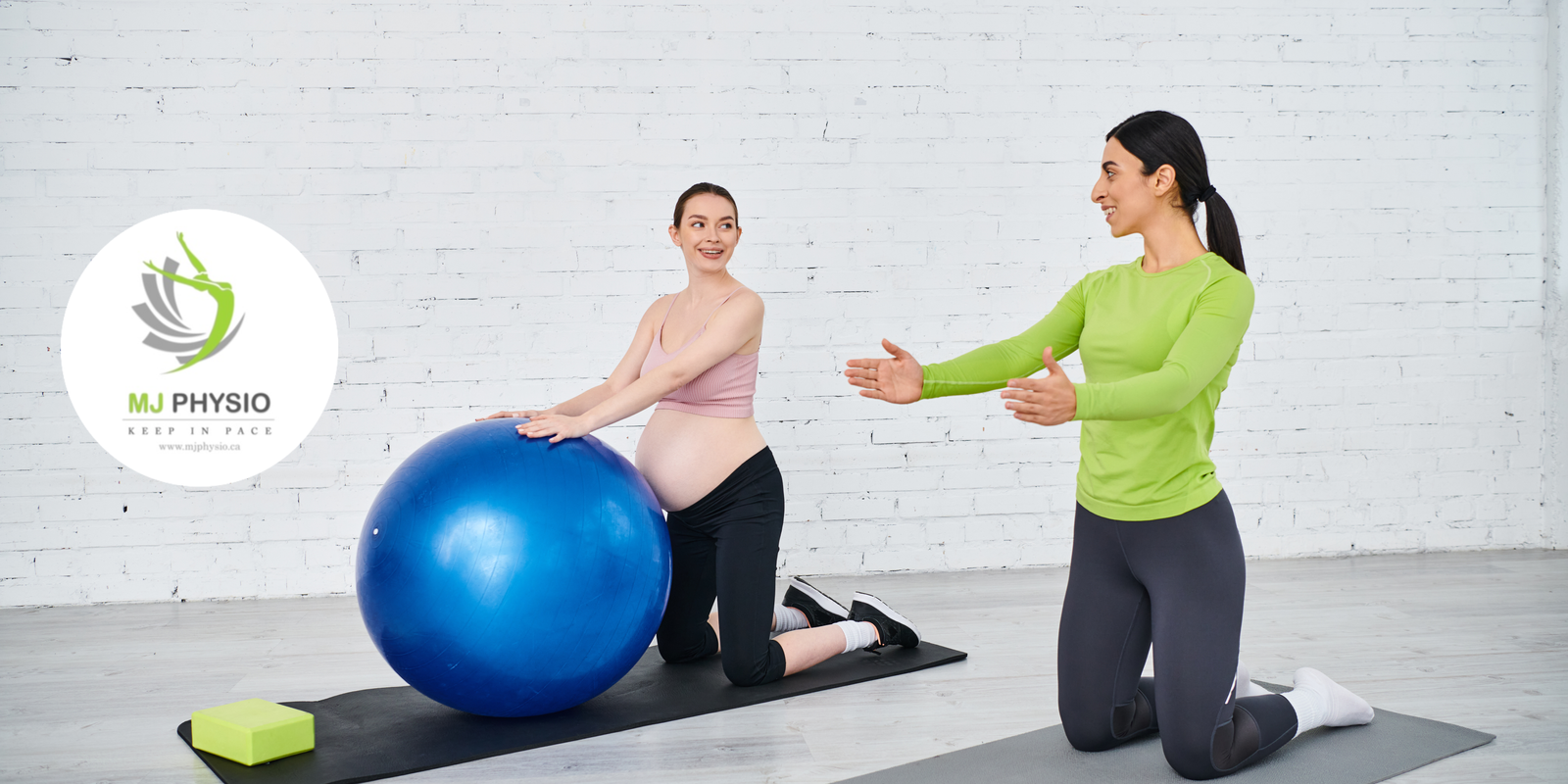Best exercises for Tennis players to prevent injuries.
In this blog some of the best exercises for tennis players to prevent injuries is detailed. Tennis is an exploding sport that needs speed on the court, power to hit hard, and stamina to remain for long periods. As a result, to do your best, and, at the same time, protect your muscles and joints from possible harm, you would have to perform at least a preliminary warm-up including several sets of stretching exercises.
Tennis Being Considered a Sport, It Is Crucial to Understand the Importance of Stretching Before Engaging in the Game
Stretching before playing tennis serves several critical purposes:
Increases Flexibility: Stretching exercises help make muscles and joints less rigid to be flexible during exercises. The resistance is thus instrumental in delivering strong and accurate hits on opponents and targets.
Enhances Performance: Muscles should be stretched properly since stretch makes muscles contract even better and perform even better. This will also make you be able to cover more ground in a shorter time and be able to change direction easily.
Reduces Injury Risk: Warming up eases your muscles and joints and you will significantly minimize your chances of a strain, sprain, or any other related injuries while in a tennis game.
Improves Blood Flow: Dynamic stretching enhances the freedom of blood circulation and oxygenation of the muscles preparing them for any action.
Mental Preparation: A stretching exercise can also be used as the mental set for the game by preparing your mind to get into the right attitude for the game.
Types of Stretching
Before diving into specific stretches, it’s important to understand the two main types of stretching you’ll incorporate into your pre-tennis routine:
Dynamic Stretching: These are movements that involve stretching and contracting of muscles that take your muscles and joints from the simple end of the action to the other. The warm-up dynamic stretches are commonly done to help increase of blood flow to the muscles as well as to prepare the body of an individual for subsequent activities.
Static Stretching: These apply force on the muscle and keep it fixed for a certain amount of time, usually ranging from 15-60 seconds, to increase the flexibility of the muscle. Although static stretching has better effectiveness after the game, some of the gentle static stretches can be a part of pre-game stretches.
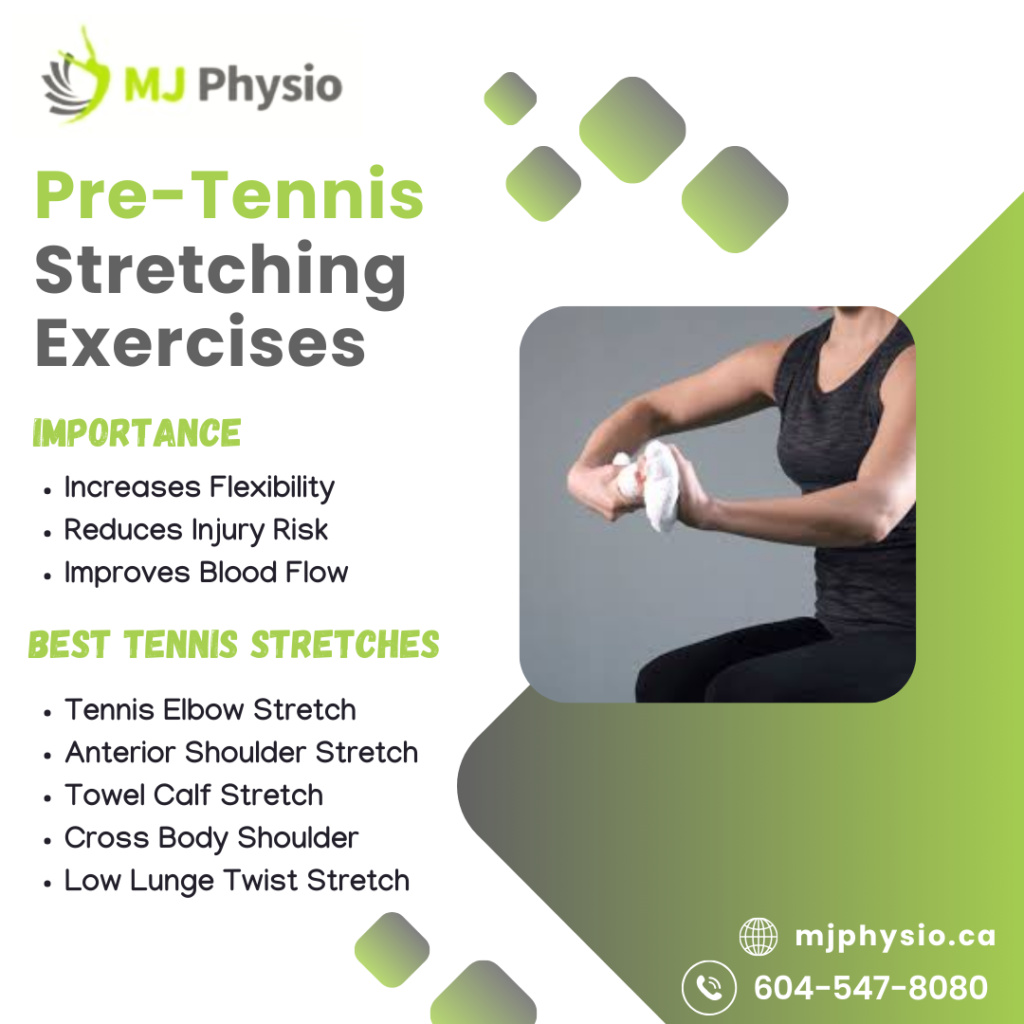
Pre-Tennis Stretching Routine
But now let’s be more concrete. Now below is a stretching exercise that can be done before engaging in tennis practice or a game before applying tennis stretches.
1. General Warm-Up
While performing the stretches it is important first to do a few minutes of warm up to raise your heart rate and circulation. Consume 5-10 minutes walking, jogging, skipping rope, or cycling at a slow pace. These are some of the best type of exercises for tennis players to prevent injuries.
2. Dynamic Stretches
- Arm Circles
Purpose: Loosen up the muscles and joints of the shoulder area.
How to Perform: Start with your feet as far as your shoulders distance apart. Wave your arms out horizontally to each side and then draw small circles larger and larger. Do 10 circles right and 10 circles left. - Walking Lunges Purpose: Flex the hip flexors, quads, and glutes. How to Perform: Jump forward with one leg and land in a lunge position as far as possible with the front knee flexed at 90 degrees. Swing your back leg to move your feet together, and then step forward with the opposite leg. Do the same for 10 to 15 lunges on each leg.
- Leg Swings
Purpose: Relax the hip flexors, hamstrings, and glutes.
How to Perform: Stay near a wall or support structure. Swing one leg forward and backward as smoothly as possible at a comfortable pace. Complete 10-15 swings on each leg.
- Trunk Rotations Purpose: Release the tension in the central muscles and enhance the ability to rotate. How to Perform: Start with your feet apart at shoulder width and your arms stretched out in front of you. Twist your upper body to the left, and then to the right in a smooth motion. Do about 10-15 rotations on each side.
- High Knees Purpose: Prepare the lower limbs and the cardiovascular system for the game. How to Perform: Jog in place, lifting your knees as high as possible towards your chest.
3. Tennis-Specific Dynamic Stretches– Best conditioning exercises for tennis players to prevent injuries.
A. Side Shuffles
Purpose: Condition the legs for sideway movements usually required in tennis. How to Perform: They should be placed wider than shoulder-width apart. Slide to the left, take a few steps backward and slide back to the right. undefined
B. Arm Swings
Purpose: Unwind the muscles of the shoulders and chest.
How to Perform: The stance should involve standing with the feet spread roughly to shoulder width. Bounce your arms gently forward and backward at a moderate pace.
C. Butt Kicks:
Purpose: Strengthen the quadriceps and also get a feel of the hamstrings.
How to Perform: Silly dance: Jog in place, lifting your heels as high as you can in the direction of your buttocks. undefined
D. Hip Circles
Purpose: Free up the hip joints.
How to Perform: Place your feet apart with equal distances of the width of your shoulders. Stand with your hands on your hips and then start moving your hips in circular motion. Do 10 circles in each direction.
4. Gentle Static Stretches– Best general stretches for tennis players to prevent injuries.
A. Quadriceps Stretch
Purpose: Pull the back of the knee to the front of the thigh.
How to Perform: Put one of your legs on a stool, chair or table and try to balance on one leg if possible. Bring your other foot towards your buttocks while your knees remain in touching or almost touching proximity. Try to hold on that position for 15-30 seconds on each leg.
B. Hamstring Stretch
Purpose: Flex the knee forward at the rear of the thigh.
How to Perform: Stand with one foot on a low bench step or stool. Bend your back forward a little so that you feel the back of your thigh is stretched. Try to hold the position on each leg for about 15-30 seconds.
C. Calf Stretch
Purpose: Perform a calf stretch exercise.
How to Perform: Begin with one leg forward and one leg backward, facing a wall. Push your back heel downwards and slightly bend your upper body forward. Repeat for 15-30 seconds on each leg.
D. Shoulder Stretch
Purpose: Relax the muscles in the shoulder area.
How to Perform: One of the techniques involves putting one arm over your chest and trying to bring it closer with the other arm. They need to hold for 15-30 seconds on each arm.
E. Triceps Stretch
Purpose: Extend the triceps muscles.
How to Perform: Stretch your right arm up and bend the elbow to try and touch the middle of your back. With your other hand, apply pressure on your elbow. The duration for holding should be in the range of 15-30 seconds for each arm.
Best Tennis Stretches: These are some of the best exercises specific for tennis players to prevent injuries.
- Tennis Elbow Stretch
Most tennis players report that their elbows ache so stretching before the game is mandatory. It can also be useful in eliminating or reducing the risk of experiencing pain in the elbow. This stretch can be performed while you are seated or standing, and you can execute it from anywhere. Some of them include the Wrist Flexor Stretch and the Wrist Extensor Stretch as it covers a wide area around the elbow, wrist, and forearm muscles.

How to perform:
- With your back straight and either sitting or standing, gaze straight forward and raise your left arm horizontally before you.
- Put your hand in front of you with your fingers spread and palm facing away from your body. This motion is known as the extensor of the wrist
- Let your right-hand pull or drag the left hand gently. Ensure the left arm does not bend at the middle joint. This will be felt across the left elbow, wrist, and forearm muscles.
- To make this a dynamic stretch, use your right hand, to tap lightly on your left hand.
- Again, relax and then perform the exercise on the other hand.
This stretch can also be done with the palm facing down, or parallel to the floor, with the fingers pointing towards the body. You also do this stretch in the wrists.
- 2. Anterior Shoulder Stretch
Tennis players are also likely to have shoulder pains including rotator cuff tears. This can be because of sudden movements like swinging or hitting the ball, serving, and jerking of arms.
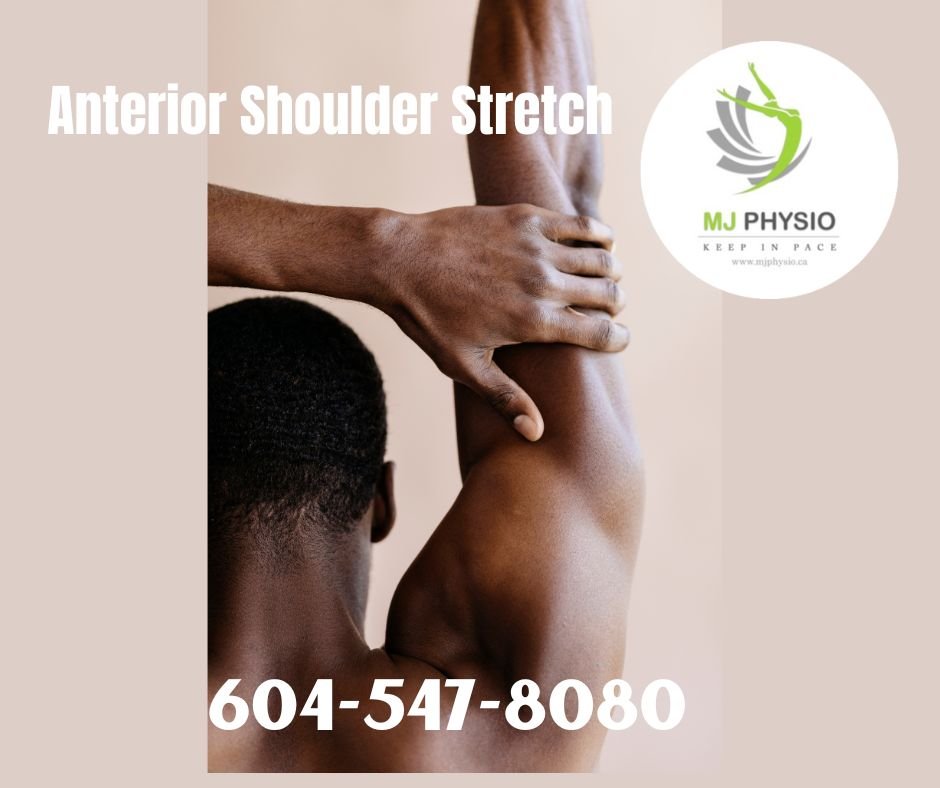
How to perform:
- Open your stance and look forward. Stand with your arms by your side.
- Standing with your feet shoulder-width apart and your arms hanging straight by your sides, place your hands behind your lower back. Your elbow position should be slightly flexed. This needs some adjustment and can be done with a towel or yoga strap if necessary. This will help you increase your flexibility until you can do this stretch without the use of a chair.
- Place your hands behind your head and then try to squeeze the shoulder blades gently.
- Slowly lower yourselves back down by extending your arms behind you. Your arms should be raised as high as you can without causing any pain in the muscles.
- Stand in the position for 10 to 30 seconds, then slowly come back to the initial position. Another one for a dynamic stretch.
- 3 Towel Calf Stretch
It is not surprising if you hear about many tennis players being prone to Achilles tendon injuries since many of the best tennis shoes are equipped to minimize these kinds of injuries. The towel calf stretch again focuses on this tendon, as well as the calf muscles. This may also help avoid injuries on the ankle as well as develop some of the muscles in the lower leg which is required in tennis.

How to perform:
- You need to start this exercise by sitting with your legs stretched all the way out in front of you, while flexing your toes. This can be done on the floor or on an exercise mat.
- You will need a towel for this stretch. Bend the other knee and lean forward to place the towel around the ball of the foot.
- Gently pulling on the towel should cause the foot to be lifted slightly off the ground. Your legs should be straight and your knee should not be bent at all. You should be able to ‘feel’ the stretch at the back of the lower leg as well as in the heel of the foot.
- The exercise should ideally be held for 15-30 seconds. Let go of the stretch, and if needed, take a break, then do the same on the opposite side.
- 4 Cross Body Shoulder Stretch
- 4 Cross Body Shoulder Stretch
- The cross-body shoulder stretch is a stretch that stretches the posterior shoulder which is the back of the shoulder area.
How to perform: - Extend your arm to the side at shoulder height and bend the other hand to grab the elbow, pulling on the other arm to increase pressure on the shoulders.
If you don’t feel a stretch then try to lower the shoulder down. - This hold lasts for 15-30 seconds before switching to the opposite side, doing one to three sets on each side.
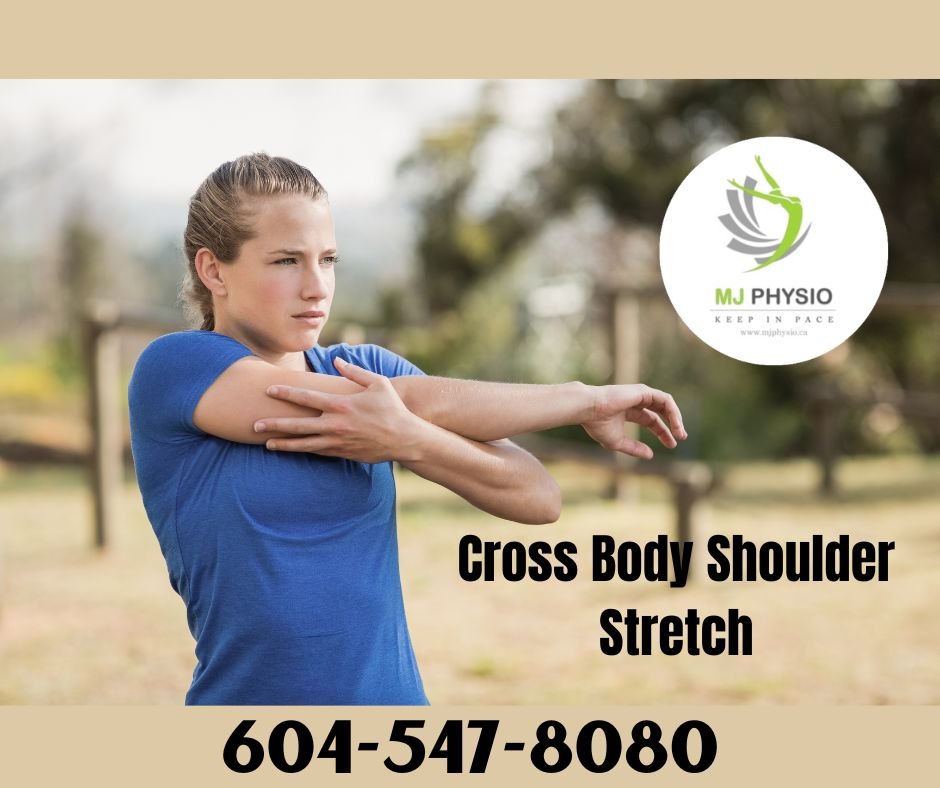
- 5 Low Lunge Twist Stretch
While the tennis racket is grasped by the hands, much of the body below the waist is engaged in games such as tennis. The muscles in the hips and legs can be made ready for exercise by stretching them.

How to perform:
- Perform this exercise on an exercise mat: stand in a forward lunge position. Take your right foot and move it forward until your left knee touches the ground.
- Twist your torso to the left and bring your right elbow across to rest on your right knee.
- Hold your left hand out wide and to the back. You should now feel a slight pull on the inside of your right thigh and your lower back.
- Pull your right elbow across your chest with your left hand for 20-30 seconds before switching sides.
Other Tips to Follow When Stretching
- Consistency is Key: Include stretching in your daily activities. Therefore, regular stretching yields long-term flexibility and performance gains.
- Listen to Your Body: Do not attempt to force a stretch. Pull the muscle until it feels tender but not sore.
- Stay Hydrated: Water is crucial for muscles and tends to improve their flexibility.”
- Combine with Strength Training: Therefore, it is recommended that you build up the strength of your muscles to allow for the flexibility and stability.
- Warm-Up Before Stretching: It is always advisable to do a general warm-up to increase blood flow before proceeding to the stretching exercises in order to reduce the chances of getting an injury.
Conclusion
Warm-up is an essential part of the preparation before a tennis game because it helps in the improvement of performance and the prevention of injury. Here, dynamic and gentle static stretches can be performed to guarantee that your body is prepared for the game. Just a reminder, follow a regular stretching routine and always pay attention to your body. Stretch before and during your tennis practice, and you will notice enhanced flexibility, enhanced performance, and an even greater love for the game.
These stretches will help any player, whether a beginner or a professional, achieve the best form during the game. Therefore, spend some time stretching, warming up and preparing for your next victory on the tennis court!
